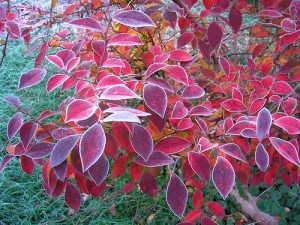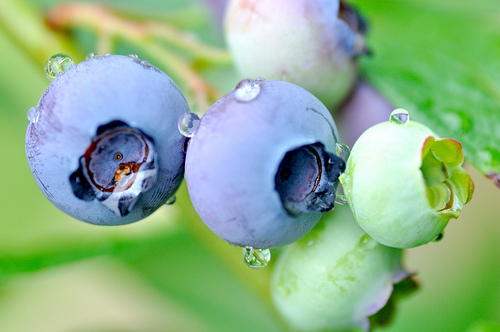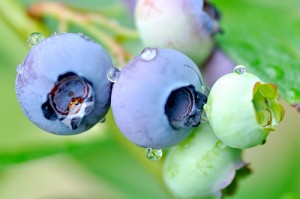Last updated on June 24th, 2022 at 01:24 pm
Blueberry bushes are relatively easy to grow, as long as you choose the right variety for your climate and provide the right conditions. And, blueberries are delicious, highly nutritious, and provide fruit over a relatively long season, particularly if you mix up some early, medium and late fruiting cultivars.
Note: This article is all about growing blueberries. We also have an article on where to buy blueberry bushes.
Choosing the right blueberry bushes for your climate
Blueberries belong to the genus Vaccinium, which also includes bilberries, cranberries and lingonberries. Actually, there are more than 450 Vaccinium plants. Blueberries come in three varietal groups – Highbush, Lowbush (wild), and Rabbiteye blueberries.
Lowbush varieties, native to northern and eastern Europe, and the colder parts of North America, need very low temperatures and are not suitable for most of Australia and the US, although obviously they do well in their native regions. Lowbush blueberry bushes are a dwarf shrub that grows to only 30-60cm (1-2′).
Rabbiteye blueberries, named for the calyx on the berry which resembles the eye of a rabbit, do well in very warm climates, such as Queensland in Australia. Mature rabbiteye bushes can reach to 5 metres or over 20′ if unpruned (making them more trees than bushes!).
Highbush blueberries are the berries you are most likely to buy at your local market, and also account for most homegrown blueberries in both the US and Australia. These originated in North America and tolerate relatively warm summers. Unless otherwise stated the growing information in this article refers to highbush varieties of blueberries. Highbush Blueberry bushes are 1.5 to 3 metres (up to 10′) tall.
Highbush blueberries are further divided into Southern Highbush, native to the Southern regions of North America, and Northern Highbush. Northern Highbush are a high chill variety, requiring around 1000 hours of temperatures below 2°C, depending on the cultivar (some tolerate as little as 750 hours). In Australia, they are the most common variety in the southern states. Southern Highbush have a lower chill requirement of only 250-600 hours. Within the Northern or Southern varieties there are numerous cultivars with slightly different requirements and providing early, middle and late setting fruit. Check with your local nursery for the best options in your area, but make sure you choose at least two different cultivars for best effect.
Conditions
Blueberry bushes like an acid soil, good sunlight, and plenty of moisture.
- The exact pH balance preferred will again depend on the exact cultivars chosen, but a good guide is a pH of 4.5-5. Blueberries will not do well in an alkaline soil. While there are ways to increase the acidity of your soil, if you live in an area of very alkaline soils you might want to consider growing your blueberries in pots.
- Blueberries prefer full sunlight, but will tolerate partial shade.
- Blueberries need plenty of soil moisture, particularly during the fruiting period. If you allow your blueberry bush to dry out while it is flowering, chances are good that it won’t set fruit. Rain water is better than tap water, as they prefer water low in dissolved salts, but any water is better than none! However, don’t use grey-water or dishwater, as they tend to raise the pH of the soil. Bare in mind also that blueberry bushes have shallow roots, so they cannot dig down deep into the soil for their drink.
- While they need moist soil, it should also be freely draining and high in organic matter.
In essence, blueberries aren’t hard to grow, but they do need to be planted in the right spots. If you are planting them in the ground, consider planting them in a hedge-like formation (though keep in mind that having branches crossing is not recommended, as the rubbing creates a good environment for disease to enter), so that you have one area you need to manage in the same way, for instance using a pine needle or pine bark mulch to maintain acidity. Or, use pots.
Pollination
With highbush varieties you will get fruit with only one cultivar. However, your blueberry bushes will fruit more heavily and generally with bigger berries if you have at least two cultivars for cross-pollination purposes.
Planting your blueberry bushes

Prepare your bed in late winter. Young blueberry bushes should be planted out in early Spring, into beds prepared a few weeks earlier.
Start by testing your soil’s pH balance. Most plants like either a mildly alkaline or mildly acid soil. Not so blueberries, which like a strongly acid soil. There are various organic methods of increasing your soil’s acidity, from adding powdered sulphur to digging in acidic compost. Follow that link for more detailed instructions, but bare in mind that using peat moss is generally considered unsustainable. Also keep in mind that the acidity can leach away to bother other plants – so you may consider growing all your acid loving plants in one area, or using containers. Some people even dig large containers into the ground to contain the acid soil more effectively. Using organic matter that will break down slowly (like pine bark) can alleviate this problem, but then it won’t change your pH balance quickly, so it will need to be combined with another method.
Dig in lots of organic matter – this can also help with the pH balance of your soil, as long as you choose the right organic matter. Avoid compost with wood ash for instance, which – while it may add useful trace minerals to your soil – will raise the pH balance. Composted pine needles and shredded pine bark make good choices.
Blueberries are shallow rooted, so your will need a shallow hole, roughly 20cm (8″) deep. Tease out the roots gently before planting, and make sure you do not let the roots dry out during the planting process.
Mulch after planting for better moisture retention. Again, pine bark is a good option here.
Pests
Blueberries don’t have many pest problems. Unfortunately the one pest they do have is very persistent. Birds love blueberries. The best solution is to use garden netting. You can buy pest net bags in various brands and sizes, to cover a whole bush.
Harvesting your blueberries: how to tell when they are ripe
It will take a couple of years to get a good crop of blueberries, as only two year old wood will set fruit. Depending on the cultivar, blueberry bushes start flowering around mid-Spring, and fruit begins to develop 2-3 months later.
Don’t pick your blueberries as soon as they turn blue. It will generally be about two weeks from when they first turn blue until they ripen. When they are ripe the blueberries will be a dark blue, and twist easily off the stem. Normally a cluster of fruit will not ripen all at the same time, so you will need to check back every few days.
If you harvest a lot of berries at once you can freeze or dry them – frozen blueberries will retain their flavour and nutrients for up to two years. However, without a lot of blueberry bushes, most people find they are able to eat all their berries fresh of the bush, and then their are always blueberry pies and blueberry jam to make as well!
Pruning your blueberry bushes
Pruning fruit trees deserves a whole article of it’s own, but for now keep in mind that
- blueberries grow on two year old wood
- you should never prune more than half the new wood
- it’s generally recommended that you prune blueberry bushes in winter, and
- most young bushes will not need much pruning, beyond removing any diseased branches.
I have found the following video about pruning young blueberry bushes quite helpful:
Go to it
Blueberries really are quite easy to grow, as long as you remember to water and keep the soil reasonably acid. They may not give you much fruit in the first year or two, but they are comparatively long lived, and will continue producing for more than fifty years. So plant those blueberry bushes now, and reap the benefits for years to come.





